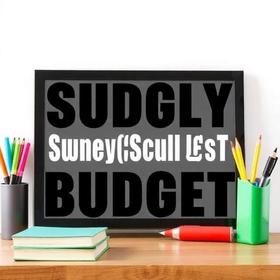Top Rankings
Ascent Academies Of Utah School District ranks among the top 20% of public school district in Utah for:
Category
Attribute
Diversity
Most diverse schools (Top 1%)
Community Size
Largest student body (number of students) (Top 1%)
For the 2025-26 school year, there are 3 public middle schools serving 1,809 students in Ascent Academies Of Utah School District. This district's average middle testing ranking is 6/10, which is in the top 50% of public middle schools in Utah.
Public Middle Schools in Ascent Academies Of Utah School District have an average math proficiency score of 38% (versus the Utah public middle school average of 38%), and reading proficiency score of 37% (versus the 42% statewide average).
Minority enrollment is 38% of the student body (majority Hispanic), which is more than the Utah public middle school average of 30% (majority Hispanic).
Overview
This School District
This State (UT)
# Schools
5 Schools
367 Schools
# Students
2,750 Students
253,746 Students
# Teachers
145 Teachers
11,762 Teachers
Student-Teacher Ratio
19:1
19:1
Student By Grade
District Rank
Ascent Academies Of Utah School District, which is ranked within the bottom 50% of all 153 school districts in Utah (based off of combined math and reading proficiency testing data) for the 2022-2023 school year.
Overall District Rank
#94 out of 154 school districts
(Bottom 50%)
(Bottom 50%)
Math Test Scores (% Proficient)
35%
40%
Reading/Language Arts Test Scores (% Proficient)
(20-21)34%
43%
Science Test Scores (% Proficient)
(20-21)40%
45%
Students by Ethnicity:
Diversity Score
0.57
0.47
% American Indian
n/a
1%
% Asian
3%
2%
% Hispanic
29%
20%
% Black
2%
1%
% White
59%
70%
% Hawaiian
2%
2%
% Two or more races
5%
4%
All Ethnic Groups
District Revenue and Spending
The revenue/student of $8,417 in this school district is less than the state median of $10,732. The school district revenue/student has declined by 19% over four school years.
The school district's spending/student of $8,760 is less than the state median of $10,829. The school district spending/student has declined by 19% over four school years.
Total Revenue
$23 MM
$7,309 MM
Spending
$24 MM
$7,375 MM
Revenue / Student
$8,417
$10,732
Spending / Student
$8,760
$10,829
Best Ascent Academies Of Utah School District Public Middle Schools (2025-26)
School
(Math and Reading Proficiency)
(Math and Reading Proficiency)
Location
Quick Facts
Rank: #11.
Ascent Academies Of Utah Lehi
Charter School
(Math: 54% | Reading: 45%)
Rank:
Rank:
8/
Top 30%10
2199 W 900 N
Lehi, UT 84043
(385) 374-9641
Lehi, UT 84043
(385) 374-9641
Gr: K-9 | 608 students Student-teacher ratio: 18:1 Minority enrollment: 29%
Rank: #22.
Ascent Academies Of Utah Farmington
Charter School
(Math: 48% | Reading: 45%)
Rank:
Rank:
7/
Top 50%10
22 South 650 West
Farmington, UT 84025
(385) 220-2200
Farmington, UT 84025
(385) 220-2200
Gr: K-9 | 423 students Student-teacher ratio: 16:1 Minority enrollment: 21%
Rank: #33.
Ascent Academies Of Utah West Jordan
Charter School
(Math: 22% | Reading: 27%)
Rank:
Rank:
2/
Bottom 50%10
5662 W 8200 S
West Jordan, UT 84081
(385) 275-0909
West Jordan, UT 84081
(385) 275-0909
Gr: K-9 | 778 students Student-teacher ratio: 20:1 Minority enrollment: 54%
Recent Articles

Public School Open House & Enrollment Season Guide
A parent-focused guide to the public school open house and enrollment season, with expert questions, timelines, and decision tips.

School Supply Budget 2026: Fees, Books, Tech Costs
School Supply Budget 2026 guide for parents, covering fees, textbooks, technology, and hidden extras to plan ahead.

Education Funding in America (2025 Update)
Comprehensive 2025 update on public school funding in America, new federal and state policies, per-pupil spending, and equity challenges.





